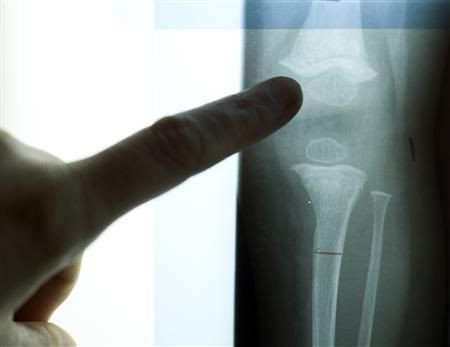World’s First Bone Repair Technology Saves Horse’s Life

Irish scientists at the Advanced Materials and BioEngineering Research (AMBER) have developed HydroxyColl, a patented bone restoration technology that has saved a racing horse’s life by reconstructing its jawbone. The new technology called HydroxyColl was presented at AMBER’s first Industry Day anniversary held at the Trinity College in Dublin.
The research team was led by Professor Fergal O’Brien, deputy director in AMBER and research director at the Royal College of Surgeons in Ireland (RCSI). The technology uses bone components such as collagen and hydroxyapatite to form a 3D porous scaffold where bone cells and blood vessels attach so tissue regeneration could begin. HydroxyColl was first tested on Annagh Haven, a two-year old filly that had a complex cyst in the jaw. This condition makes the animal vulnerable to jawbone fracture and chewing disability.
To improve the horse’s condition, the cyst was removed and pieces of the scaffold were implanted. The procedure has helped bone tissues to heal and bones to retain their shape and function. Since then, the horse was able to race again. Dr Florent David performed the surgery at University College Dublin’s Veterinary Hospital.
HydroxyColl will be brought to SurgaColl Technologies for marketing. This medical company engages in supplying unique tissue restoration products for the surgical treatment of certain body parts. The new AMBER technology is seeking regulatory approval for clinical trials on humans. Patients enduring major bone damage will benefit from successful implantations.
Damien English, minister for Skills Research and Innovation said, “I congratulate Professor O’Brien, his team and collaborators at AMBER for this breakthrough solution that could have real application in the veterinary sector and which could ultimately improve the lives of thousands of people also.”
At the event, Prof Stefano Sanvito, acting director of AMBER, also stated that the creation of the new scaffold technology demonstrates AMBER’s track record of pushing the boundaries of science to explore real solutions for people. “We will continue to carry out excellent research that has clear societal impact,” he adds.
The AMBER bone repair technology case study has been accepted for publication in the Journal of Tissue Engineering & Regenerative Medicine.
To leave feedback about the content, email: j.panganiban@ibtimes.com.au





















